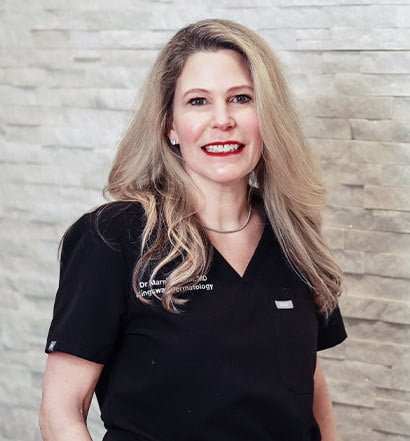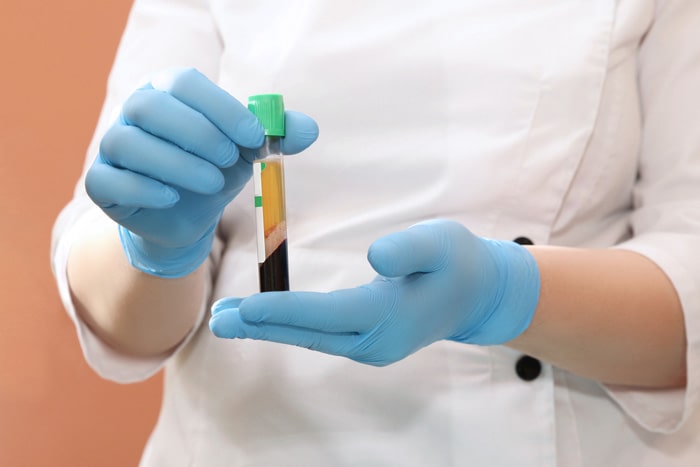Diving Deep! the Magic of Platelet-Rich Plasma (PRP) vs. Platelet-Rich Fibrin (PRF): A Dermatologist’s Insight

Author:
Dr. Marnie E. Fisher
As advancements in regenerative medicine continue to flourish, Platelet-Rich Plasma (PRP) and Platelet-Rich Fibrin (PRF) have emerged as game-changing therapies in our field of dermatology. Both PRP and PRF harness the healing potential of our blood, but there are distinct characteristics and application methods. As a dermatologist with a passion for cutting-edge treatments, I am excited to explore and compare the benefits and applications of these two revolutionary therapies.
Platelet-Rich Plasma (PRP) has earned its reputation as the “healing elixir” due to its extensive use in medical and aesthetic procedures. By extracting and concentrating platelets from a patient’s blood, PRP can be used to deliver a potent mix of growth factors and enzymes that stimulate collagen production, tissue repair, and hair growth. The platelets and plasma are integral for the body’s natural healing processes, and the pro-inflammatory white cells and red cells are removed during the “clot free” spinning process.
It is commonly used to rejuvenate the skin, boost collagen, improve skin health and radiance, reduce the appearance of scars, and promote hair regrowth.
Platelet-Rich Fibrin, or PRF, is cementing its reputation as a sustained “matrix regenerator.” PRF represents a fascinating evolution from PRP. A second tube of the patient’s blood is spun to separate plasma and platelets and are allowed to clot (meaning soluable fibrinogen converts to fibrin). By adding autologous fibrin to PRP, a three-dimensional fibrin matrix containing platelets, nutrients, and growth factors will be forming upon injection to the targeted tissues. This naturally derived matrix ensures a gradual and sustained release of healing components, enhancing tissue regeneration, and promoting a longer-lasting effect. This is especially useful in facial rejuvenation as it can be used to lift and tighten the skin.

While both PRP and PRF exhibit undeniable regenerative potential, their choice depends on the specific needs of the patient and the desired outcome. PRP’s advantage lies in its immediate release of growth factors, while PRF has a slower and sustained release. In aesthetic medicine, PRP is typically used superficially, while PRF can be used to stimulate deeper structures.
Our preference is to see them as complementary versus competing therapies. By combining PRP’s rapid action with PRF’s long-term effects, we can customize treatment plans that optimize both immediate results and lasting benefits. The synergy of these two therapies opens new avenues for advanced regenerative treatments in the dermatological realm.
Choosing PRP and PRF ultimately depends on individual patient needs and the condition being treated. By staying informed about the latest research and developments in regenerative medicine, we can empower patients with personalized and effective treatments that harness the incredible healing power of their own bodies.
Who is a candidate for PRP and PRF? Anyone, really. It’s extremely safe for use on all skin tones during every Toronto season. PRP can be adjuvantly used after Secret RF microneedling and laser treatments or performed alone with an automated microneedle delivery, or hand injected to special areas like the eye lids. Our PRF clients have considered this as an addition to HA filler treatment or a more natural approach to achieve filler results — both sentiments are correct.
We have been offering PRP at KDCC for close to 10 years, learning many techniques and following European experts and hands on training abroad. We know our patients are thrilled, and we’re beyond excited to offer this next step of regenerative therapies.
We invite you to schedule a True YOU consultation with one of our experts who can help customize a plan that is right for you.
Geek points; The extracellular matrix (ECM) is a system of macromolecules and proteins (over 300!) that form an intricate network system that is tissue specific. While it can be considered as scaffolding as it forms a structurally stable component of the tissue, research shows it also acts as a highway for the interconnected immune function as well. Along with the ECM within the tissues, it also exists inside the cells to bridge the nucleus to the peripheral cellular membrane. Thus, it’s vital for the very fundamental daily activities of migration, differentiation, proliferation, and apoptosis to name a few.
ECM elements; to name a few:
Collagen; must be stimulated by fibroblasts to be ‘made on site.’ Consumed collagen does not magically float to the target sites! However, nutrient rich, protein rich diets are very important.
Proteoglycans; including hyaluronic acid.
Fibronectin; the biological “glue”!!
Elastin; very important stretch for lungs! Very important for cosmesis! Wear your UV protection every day!!!

